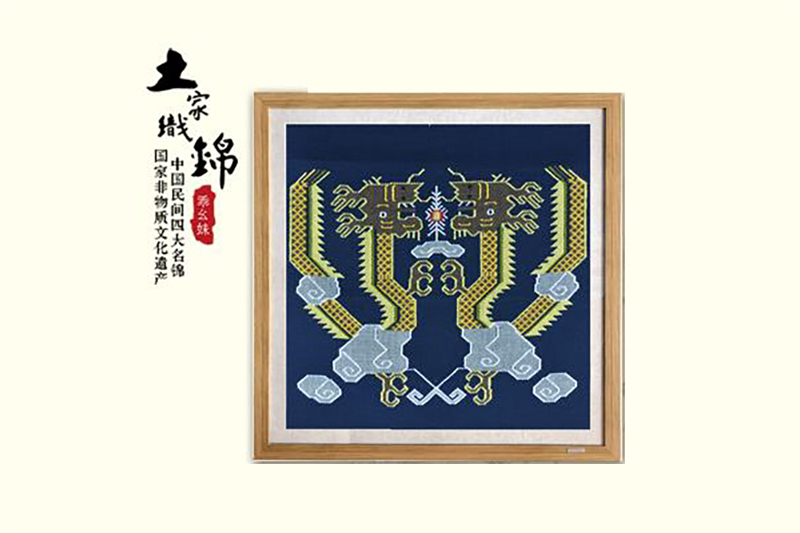Tujia brocade is the Xilankapu of the Tujia people in Wuling Mountain area, with a long history. It is one of the national minority brocade in China. Tujia brocade folk called "playing flowers", traditional brocade is used for bedding, Tujia language called "Xilankapu", meaning for soil flower bedding. The "Unified Annals of the Ming Dynasty" called it "Banbu". The main raw materials of Tujia brocade are silk, cotton and plush thread. Its weaving method is to follow the waist weaving method of the ancient oblique loom, the warp is tied to the waist to see the back and weave the front.

Cilankap uses silk, cotton and hemp as raw materials, with red, blue and black as the color of the tapestry warp, and the weft is determined by the weavers themselves, all kinds of colors can be used. In the old wooden waist type machine, the back of the hand is looked at, and the front is hand-woven, using the method of "through the warp and break the weft". Xilankapu is derived from the history and culture of the Tujia people, but in the process of development, it has integrated the advanced cultural factors of various nationalities in both technology and pattern, and carried forward the diversified national characteristics of the Chinese nation.


The varieties of Tujia brocade include sachets, clothing, travel bags, sofa covers, cushions, interior decorations, bedding, armor, backpacks, etc., which are incredibly beautiful. This requires a skilled memory of the style, pattern, and color outline in order to weave well. This weaving method produces products that are beautiful, neat, sturdy, durable, and have a long-lasting luster. Its visuals are diverse and colorful, often drawing inspiration from bright flowers, feathers of mandarin ducks, sunset in the sky, and rainbows after rain. The colors are beautiful, natural, and vivid; Some are influenced by religious painting and have the characteristics of simplicity, antiquity, and composure. In terms of pattern organization structure, diamond shaped structures and diagonal lines are often used as the main body, emphasizing geometric symmetry and repeated continuity. There are over a hundred traditional patterns.

Tujia brocade is an outstanding representative of the traditional culture of the Tujia family, occupies a major position in the entire national craft culture, and has a unique value to witness the multi-culture of the Chinese nation.